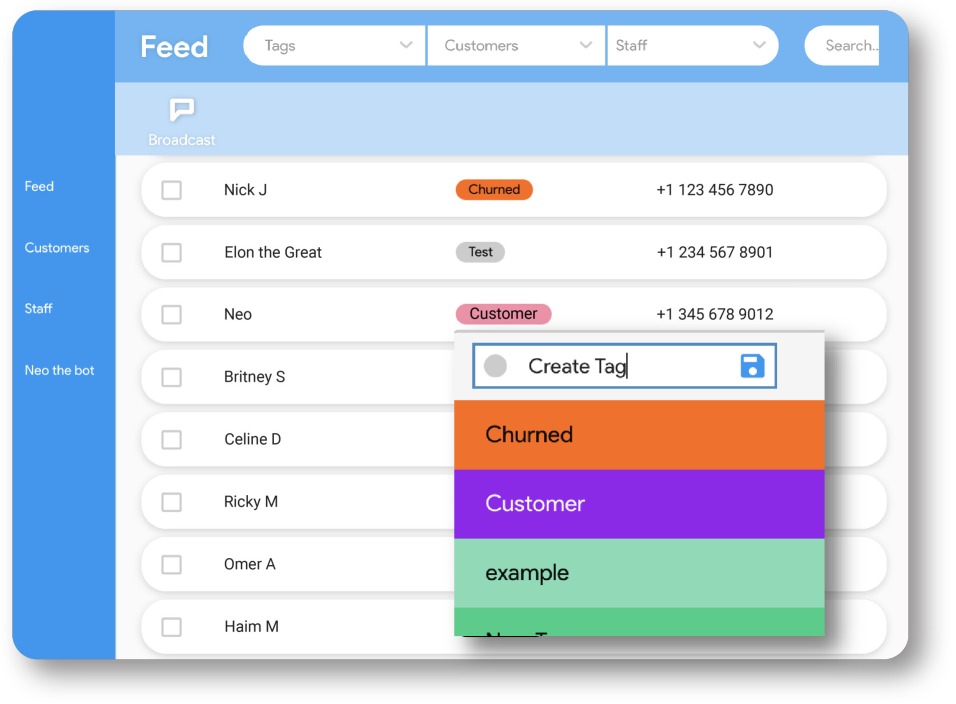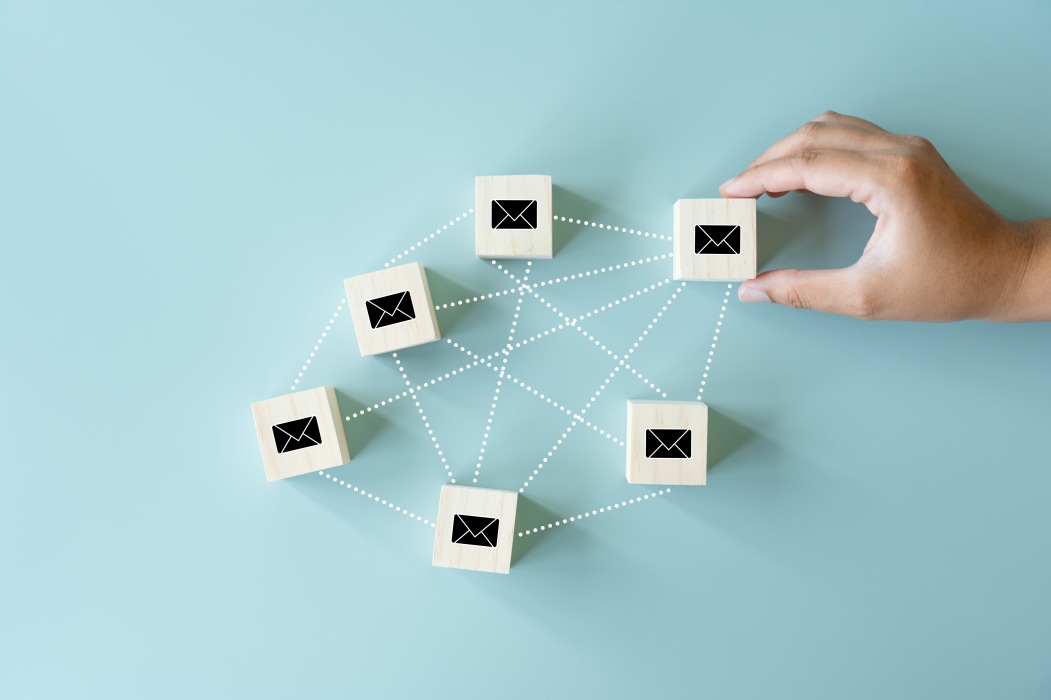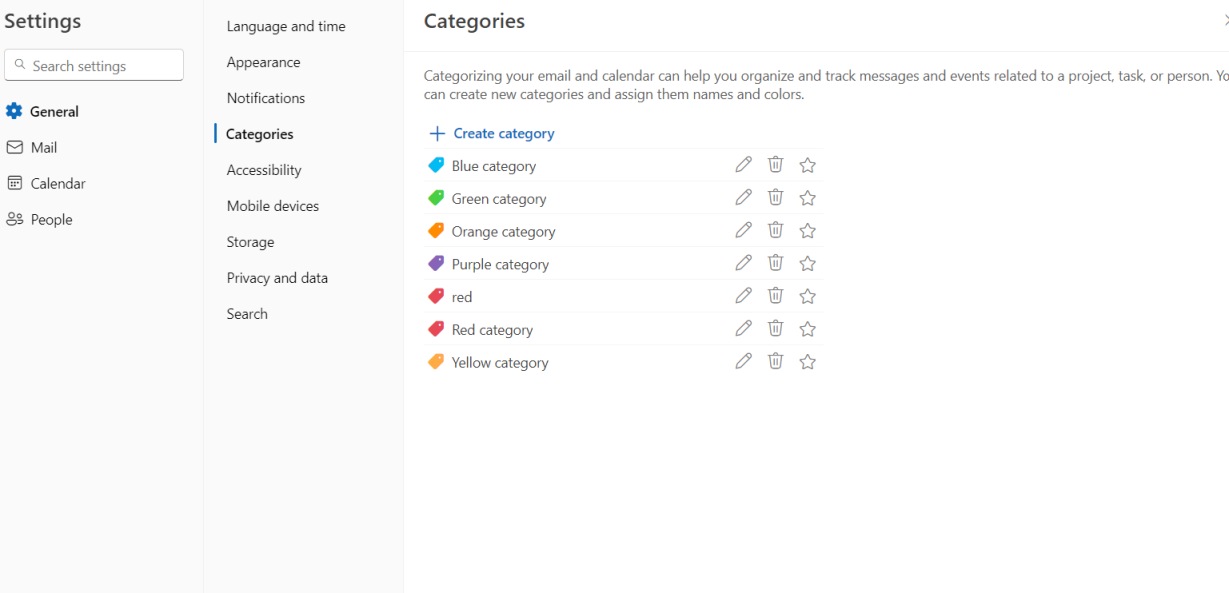What is Email Tagging?
Email tagging is a crucial tool for businesses looking to strengthen their email marketing efforts. By giving specific tags to single or groups of subscribers, a well-organized segmentation of email lists is created, which in turn paves the way for more personalized communications.
Enhancing Personalized Content Delivery
The core of email tagging is in its capacity to enable personalized content delivery, ensuring messages connect well with different customer segments based on their preferences, demographics, and engagement rates. This strategic method not only boosts the relevance and effect of each email sent but also gives businesses the power to make data-driven decisions.
Strategic Benefits
For instance, knowing which subscribers are highly engaged provides a base for sending follow-up emails, while spotting potential customers might lead to the sending of discount coupons to encourage purchases. Over time, the combined effect of such focused communications leads to better conversion rates, increased customer satisfaction, and strong business growth. The practice of email tagging, therefore, is not just a tactical choice but a strategic endeavor that boosts the overall effectiveness of email marketing campaigns, making them a more powerful tool in a business’s digital marketing toolkit.
Benefits of Email Tagging
The usefulness of email tagging stretches far beyond mere organization; it’s a catalyst for improved performance in email marketing campaigns.
Structured Categorization
By facilitating a structured categorization of email marketing lists, tags aid in the streamlining of campaigns, thus lifting the overall operational efficiency. The segmentation empowered by tags unveils a wealth of insights into customer interests and demographics.
Foundation for Personalization
This segmentation, in return, acts as a base for crafting personalized email content and designing targeted campaigns that connect with different segments of the audience.
Analytical Insights
Besides, the analytical aspect of email tagging cannot be overstated. It provides a framework for measuring the success and impact of email marketing efforts by tracking metrics like engagement rates, email response time and conversion rates across different segments.
This data-driven method not only nurtures a culture of continuous improvement but also enables the fine-tuning of strategies to achieve better results in subsequent campaigns.
Identifying your Target Audience
Identifying the target audience serves as the cornerstone in the edifice of an effective email tagging strategy.
Comprehensive Understanding
This involves a thorough understanding of who the ideal customers are, their needs, preferences, and behaviors. A detailed analysis of existing customer data, encompassing purchase history and demographic information, lays the groundwork for this understanding.
Engaging with Customers
Moreover, engaging with customers directly through surveys or interviews can provide invaluable insights that further refine the understanding of the target audience. Equipped with this information, businesses can create diverse buyer personas that accurately represent different segments of their target audience.
Blueprint for Tagging
These personas, in return, provide a blueprint for tagging the email list in a way that aligns with the distinct characteristics and preferences of different customer segments. The ultimate goal is to ensure that the messages sent are not only relevant but also resonate well with the audience, thereby driving better engagement and fostering a deeper connection between the brand and its customers.
Want to supercharge your email marketing with our winning tagging strategies for businesses?
Contact Growth Hackers
Segmenting Subscribers by Tags
The practice of segmenting subscribers by tags using email marketing software is a powerful strategy to optimize email campaigns and drive superior results.
Markers for Grouping
Tags serve as markers that help group subscribers based on common interests or behaviors, thereby enabling the delivery of more targeted and personalized content.
Criteria Identification
The first step in this endeavor involves identifying the different criteria that will serve as the base for segmentation, such as demographics, purchase history, engagement levels, or specific actions taken on the website.
Assigning Relevant Tags
Following this, relevant tags are assigned to each subscriber based on these criteria using the email marketing software. For instance, tags could include identifiers like “male/female,” “first-time buyers,” or “avid readers.”
Benefits of Segmentation
The segmentation facilitated by tags brings forth numerous benefits. It not only boosts open and click-through rates by delivering content that connects with each specific group but also enables the sending of targeted follow-up emails based on specific actions, thereby increasing the likelihood of conversions.
Personalizing Content for Different Types of Audiences
Personalizing content for a variety of audience types is a key to achieving success in email marketing campaigns.
Using Tags for Segmentation
Using tags to segment subscribers provides a structured approach to delivering tailored and relevant messages to each group.
Creating Tags
The journey towards achieving this begins with creating tags based on specific criteria such as interests, demographics, or previous interactions.
Assigning Tags
The next step involves leveraging the capabilities of email marketing software to assign tags to subscribers, thereby creating distinct segments.
Delivering Personalized Content
For example, subscribers interested in fashion may receive emails featuring new clothing arrivals, styling tips, or discount coupons. On the other hand, subscribers who have previously purchased electronics may be sent emails about the latest gadgets, product reviews, or exclusive offers on accessories.
Use Product Tags to Increase Engagement
Employing product tags in email marketing campaigns can significantly boost engagement with subscribers.
Identifiers for Targeting
These tags serve as identifiers that help target specific groups of customers who have shown interest in particular products or categories.
Sending Relevant Content
By sending them relevant content and tailored offers based on their interactions, businesses can capture their attention and drive higher conversion rates.
Product Tags and Customer Interests
Product tags play a pivotal role in understanding and identifying customer interests. When a subscriber interacts with a specific product or category, relevant tags can be assigned to them, which in turn form the base for tailoring future email campaigns.
Example of Product Tagging
For instance, if a subscriber has shown interest in skincare products, they can be tagged accordingly, and subsequent emails could contain skincare tips, product recommendations, or exclusive offers on skincare items.
Enhancing Engagement through Personalization
The personalization of content based on product tags not only enhances engagement but also helps build a stronger relationship with customers.
Building Customer Relationships
By delivering relevant and personalized content, businesses demonstrate an understanding of their customers’ needs and preferences, which in turn fosters a sense of value and increases the likelihood of conversion.
Strategic Approach to Engagement
Tailoring email campaigns based on product tags is a strategic approach that not only boosts engagement but also cultivates a culture of customer-centricity, thereby leading to higher customer satisfaction and loyalty.
Crafting Effective Subject Lines and Preheaders
Crafting compelling subject lines and preheaders is a crucial aspect of email marketing campaigns as they serve as the initial touchpoint and significantly impact open rates and engagement.
Techniques for Captivating Subject Lines
One technique to enhance the appeal of subject lines is personalization. Incorporating the recipient’s name or referencing their past interactions or purchase history can create a sense of connection and relevance, thereby increasing the likelihood of the email being opened.
Instilling Urgency
Another effective technique is instilling a sense of urgency in the subject lines. Using phrases like “limited time,” “today only,” or “ending soon” can evoke a sense of urgency and prompt the reader to act immediately.
Piquing Curiosity
Additionally, piquing the reader’s curiosity is also an effective tactic. Using provocative or intriguing statements that arouse the reader’s curiosity can generate interest and encourage them to open the email to learn more.
Role of Preheaders
Alongside subject lines, preheaders also play a vital role in capturing the reader’s attention. Preheaders provide a sneak peek into the email content, allowing the reader to quickly assess its relevance and value.
Importance of Optimized Preheaders
It is crucial to optimize preheaders by using keywords or snippets of compelling information to further entice the reader to open the email. The synergy between catchy subject lines and well-crafted preheaders can significantly enhance open rates, engage the audience, and drive the success of email marketing campaigns.
Get ready to master email tagging for business success!
Gmail Labels for Organization
Gmail Labels is a robust tool for organizing and categorizing emails, offering a plethora of benefits for business communication.
Easy Grouping and Sorting with Gmail Labels
With Gmail labeling, the task of grouping and sorting emails based on specific criteria becomes a breeze, facilitating efficient management of messages.
Customization with Gmail Labels
The primary function of Gmail Labels is their ability to allow users to categorize emails in a manner that aligns with their preferences and operational needs.
Enhancing Communication through Labeling
Beyond email organization, Gmail Labels play a pivotal role in enhancing communication. By applying labels to incoming and outgoing messages, prioritization of important messages is achieved with ease.
Streamlining Inbox with Outlook Categories
Outlook Categories offer a valuable solution for organizing and classifying emails efficiently. By leveraging this feature, businesses can streamline their email management process and ensure that important messages are easily accessible, thus enhancing overall operational efficiency.
Creating and Assigning Categories in Outlook
The process of creating categories in Outlook is straightforward. Users can navigate to the Home tab, click on “Categorize,” and select “All Categories.”
Benefits of Outlook Categories
Outlook Categories contribute to enhanced efficiency and time management. By employing categories, users can quickly filter their inboxes to focus on relevant emails or prioritize urgent messages.
Visual Organization with Outlook Categories
Additionally, the ability to customize colors for each category adds a visual element to email organization, making it easier to identify and differentiate emails at a glance.
Advancements in Tagging Strategies for Email Marketing
Employing tagging strategies can significantly enhance email marketing campaigns by allowing for a structured categorization and segmentation of subscribers based on various parameters.
Importance of Managing Tags
Firstly, it’s essential to manage and update tags regularly to ensure they accurately reflect the preferences and behavior of subscribers.
Automation in Tagging
Automation tools streamline the tagging process by setting up rules that automatically assign tags based on subscriber actions, such as opening emails, clicking on links, or making purchases.
Dynamic Tagging and Real-time Engagement
Dynamic tagging allows for the assignment of tags based on real-time subscriber behavior, enabling the delivery of highly targeted messages tailored to their specific interests and needs.
Final Words on Email Tagging Strategies for Businesses
The integration of email tagging strategies presents businesses with various strategic advantages that boost the effectiveness of their email marketing campaigns. One of the primary benefits is the ability to personalize and target messages to individual subscribers or segments. Tagging strategies optimize the content strategy. By tagging subscribers based on the type of content they engage with or the stage of the customer journey they are in, businesses can tailor their messages accordingly.
Growth Hackers is a reputable email marketing agency helping businesses from all over the world grow. There is no fluff with Growth Hackers. We help entrepreneurs and business owners implement effective email tagging strategies, increase their productivity, generate qualified leads, optimize their conversion rate, gather and analyze data analytics, acquire and retain users and increase sales. We go further than brand awareness and exposure. We make sure that the strategies we implement move the needle so your business grow, strive and succeed. If you too want your business to reach new heights, contact Growth Hackers today so we can discuss about your brand and create a custom growth plan for you. You’re just one click away to skyrocket your business.








